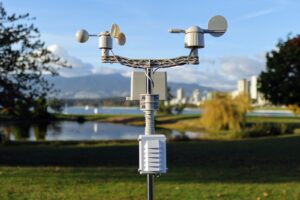Exploring Performance and Suitability for IoT Deployments
Differences between LPWAN Technologies: A Comparative Overview
The differences between LPWAN technologies such as LoRaWAN, Sigfox, and NB-IoT are critical for business executives, mid-level managers, and entrepreneurs in Saudi Arabia, the UAE, Riyadh, and Dubai who are exploring the potential of IoT solutions. LPWAN (Low-Power Wide-Area Network) technologies are designed to connect low-power devices over long distances, making them ideal for IoT deployments. However, each LPWAN technology has unique characteristics that impact performance and suitability depending on the specific use case.
LoRaWAN is a popular choice due to its flexibility and open standard, allowing it to be implemented across various industries, including smart cities and agriculture. It operates in the unlicensed spectrum, offering a cost-effective solution with a wide range of coverage. However, its data transmission rate is relatively low, which might limit its application in scenarios requiring real-time data processing.
On the other hand, Sigfox offers an even lower data rate but excels in ultra-low power consumption, making it suitable for applications where devices need to last for years on a single battery. Sigfox also operates in the unlicensed spectrum but provides a more controlled network environment, which can be advantageous for certain applications. However, its global coverage is still growing, which may be a limitation for companies operating across multiple regions.
NB-IoT (Narrowband IoT) is distinct from both LoRaWAN and Sigfox as it operates in the licensed spectrum, typically through existing cellular networks. This offers a higher quality of service, particularly in terms of data reliability and security. NB-IoT supports higher data rates and is better suited for applications requiring more frequent data transmissions, such as smart meters or healthcare monitoring. However, the reliance on cellular infrastructure may lead to higher deployment costs, particularly in areas where such networks are not well-established.
Performance Considerations for LPWAN Technologies in the Gulf Region
When selecting between LoRaWAN, Sigfox, and NB-IoT, the performance of each technology must be evaluated in the context of the Gulf region’s unique environmental and infrastructural challenges. In cities like Riyadh and Dubai, where urban density and technological advancement are high, NB-IoT’s reliance on existing cellular networks can be a significant advantage, providing robust connectivity even in challenging environments. This makes NB-IoT an ideal choice for smart city applications, where reliable data transmission is crucial for monitoring and managing urban infrastructure.
Conversely, in more remote areas of Saudi Arabia or the UAE, where cellular coverage may be less consistent, LoRaWAN’s wide coverage and adaptability offer a more practical solution. Its ability to penetrate obstacles and provide connectivity over large areas without the need for extensive infrastructure makes it a strong candidate for agricultural IoT applications, such as monitoring soil moisture levels or tracking livestock.
Sigfox, with its focus on ultra-low power consumption, might be the best fit for applications requiring minimal data transmission and where battery life is a priority. For instance, in environmental monitoring, where sensors might need to function in remote locations for extended periods without maintenance, Sigfox’s long battery life and sufficient range offer a distinct advantage.
Conclusion: Choosing the Right LPWAN Technology for Your IoT Needs
In conclusion, the choice between LoRaWAN, Sigfox, and NB-IoT should be guided by the specific requirements of your IoT project and the unique conditions of your deployment environment. Understanding the differences between LPWAN technologies in terms of performance, coverage, and suitability is crucial for making an informed decision that aligns with your business goals and the technological landscape of Saudi Arabia, UAE, Riyadh, and Dubai.
For enterprises in the Gulf region, where digital transformation is rapidly advancing, selecting the right LPWAN technology can be a key factor in the success of IoT initiatives. LoRaWAN offers flexibility and wide coverage, making it suitable for a variety of applications, especially in areas with limited infrastructure. Sigfox’s ultra-low power consumption is ideal for long-term, low-maintenance deployments, while NB-IoT’s reliability and higher data rates make it the best choice for applications requiring frequent data transmission and robust security.
By carefully evaluating the performance and suitability of each LPWAN technology, businesses can ensure that their IoT deployments are both efficient and scalable, supporting their long-term strategic objectives in an increasingly connected world.
—
#LPWAN #IoT #LoRaWAN #Sigfox #NB-IoT #DigitalTransformation #SmartTechnologies #SaudiArabia #UAE #Riyadh #Dubai













